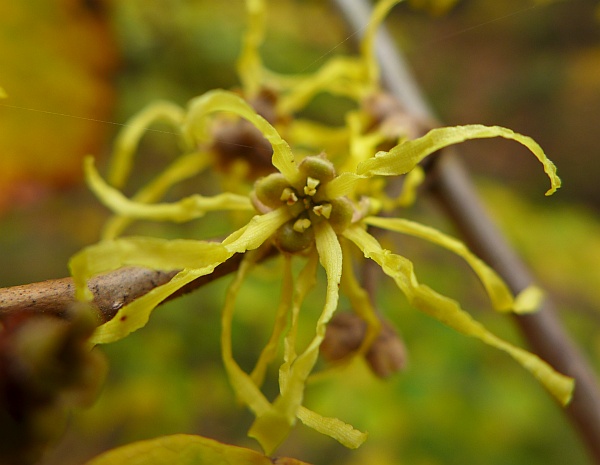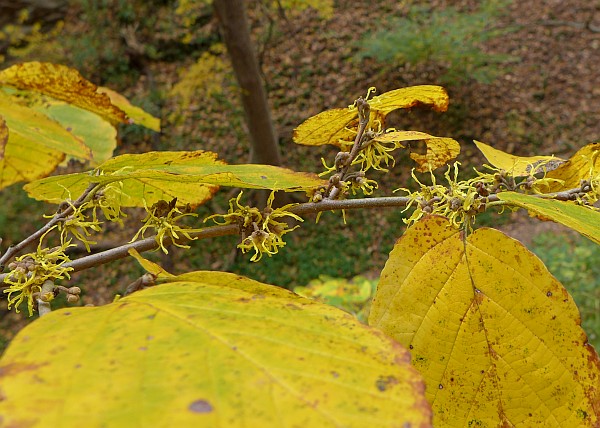
American witch-hazel (Hamamelis virginiana) is blooming in southwestern Pennsylvania. Look for small yellow flowers clustered on the stems of a shrub or small tree.
Its four petals resemble lemon peel and are slightly hidden by the leaves right now but they’ll persist into November when they’ll be easier to see.

Witch-hazel is the only tree I know of that blooms in the fall, September to November. It has other odd traits, too.
- Though it blooms in the fall, it doesn’t set fruit until the following August, nearly a year later.
- Just before it blooms the old fruit explodes, dispersing seeds up to 20 feet away.
- Witch-hazel can find water. Its branches are used as divining rods.
- It’s no coincidence that this plant has the same name as the astringent “witch hazel.” The topical treatment is an extract of witch-hazel’s leaves and bark.
I found this one blooming in Schenley Park along the Lower Panther Hollow Trail.
(photos by Kate St. John)
p.s. Check the comments for Sally’s question about pollination and the fascinating answer.
Very interesting, I will be looking for witch hazel trees in my walks.
Do you know how it is pollinated?
Sally, I just looked it up and the answer from Bernd Heinrich is that the owlet moth fertilizes them at night.
http://www.acsu.buffalo.edu/~insrisg/nature/nw94/0110WitchHazel2.htm
Perhaps the moth I wrote about two days ago is one of them.
http://www.birdsoutsidemywindow.org/2014/10/25/moth-identity-challenges/